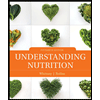17. The effect sizes for the SNPS linked to performance on IQ tests are very very small. Why does that make it unlikely that we can genetically engineer humans with super high IQ? 18. True or False: Diseases such as type II diabetes and lung cancer are likely caused by mutations to a single gene. Explain your answer. 19. True or False: SNPS that are associated to disease using GWAS design should be immediately consid- ered for further molecular functional studies. Explain your answer.
17. The effect sizes for the SNPS linked to performance on IQ tests are very very small. Why does that make it unlikely that we can genetically engineer humans with super high IQ? 18. True or False: Diseases such as type II diabetes and lung cancer are likely caused by mutations to a single gene. Explain your answer. 19. True or False: SNPS that are associated to disease using GWAS design should be immediately consid- ered for further molecular functional studies. Explain your answer.
Concepts of Biology
1st Edition
ISBN:9781938168116
Author:Samantha Fowler, Rebecca Roush, James Wise
Publisher:Samantha Fowler, Rebecca Roush, James Wise
Chapter10: Biotechnology
Section: Chapter Questions
Problem 13CTQ: Identify a possible advantage and a possible disadvantage of a genetic test that would identify...
Related questions
Topic Video
Question

Transcribed Image Text:### Questions and Explanations
#### 17. SNPs and IQ
The effect sizes for the SNPs linked to performance on IQ tests are very small. Why does that make it unlikely that we can genetically engineer humans with super high IQ?
**Explanation:**
The small effect sizes of SNPs (single nucleotide polymorphisms) related to IQ suggest that each individual genetic variation contributes minimally to IQ levels. This implies that a multitude of genetic variations, alongside environmental factors, collectively influence intelligence. The complexity and multigenic nature make it challenging to genetically engineer significantly higher IQ levels.
#### 18. Genetic Complexity of Diseases
True or False: Diseases such as type II diabetes and lung cancer are likely caused by mutations to a single gene. Explain your answer.
**Explanation:**
False. Diseases like type II diabetes and lung cancer are typically multifactorial, involving multiple genes and environmental influences. These conditions do not result from a single gene mutation but rather from complex interactions among various genetic factors and lifestyle or environmental factors.
#### 19. GWAS and Functional Studies
True or False: SNPs that are associated with diseases using GWAS design should be immediately considered for further molecular functional studies. Explain your answer.
**Explanation:**
True. While GWAS (Genome-Wide Association Studies) identify associations between SNPs and diseases, these associations do not establish causation. It is essential to conduct molecular functional studies to determine how these SNPs contribute to disease mechanisms and validate their potential as therapeutic targets.
Expert Solution
This question has been solved!
Explore an expertly crafted, step-by-step solution for a thorough understanding of key concepts.
This is a popular solution!
Trending now
This is a popular solution!
Step by step
Solved in 2 steps

Knowledge Booster
Learn more about
Need a deep-dive on the concept behind this application? Look no further. Learn more about this topic, biology and related others by exploring similar questions and additional content below.Recommended textbooks for you

Concepts of Biology
Biology
ISBN:
9781938168116
Author:
Samantha Fowler, Rebecca Roush, James Wise
Publisher:
OpenStax College

Human Heredity: Principles and Issues (MindTap Co…
Biology
ISBN:
9781305251052
Author:
Michael Cummings
Publisher:
Cengage Learning


Concepts of Biology
Biology
ISBN:
9781938168116
Author:
Samantha Fowler, Rebecca Roush, James Wise
Publisher:
OpenStax College

Human Heredity: Principles and Issues (MindTap Co…
Biology
ISBN:
9781305251052
Author:
Michael Cummings
Publisher:
Cengage Learning



Biology Today and Tomorrow without Physiology (Mi…
Biology
ISBN:
9781305117396
Author:
Cecie Starr, Christine Evers, Lisa Starr
Publisher:
Cengage Learning

Understanding Nutrition (MindTap Course List)
Health & Nutrition
ISBN:
9781337392693
Author:
Eleanor Noss Whitney, Sharon Rady Rolfes
Publisher:
Cengage Learning